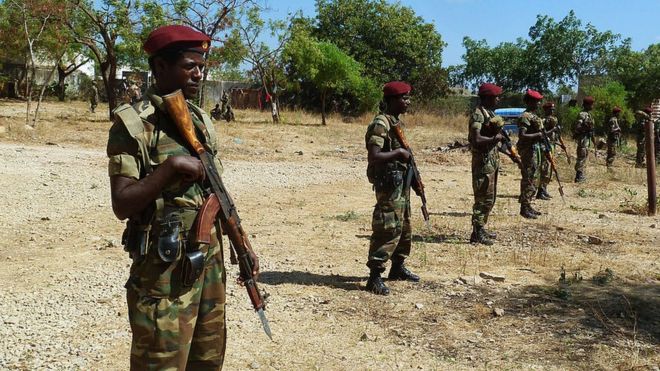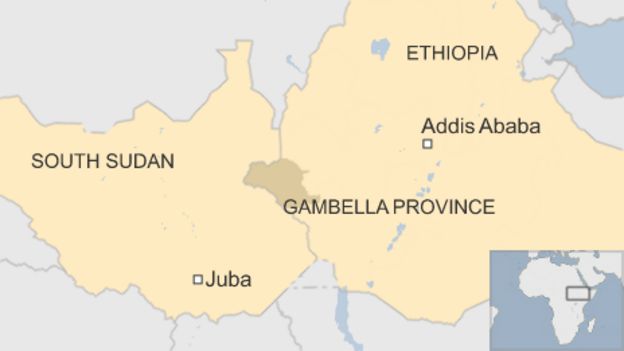Ethiopia children still missing after cross-border raid - AJE News: "Villagers ask who was responsible for attacks that left 208 people dead and many children still missing.
Charles Stratford
Dozens of children are still missing after a cross-border raid on villages in the Gambela region of western Ethiopia by South Sudanese tribesmen.
Attackers from South Sudan's Merle tribe killed 208 Ethiopian villagers, abducted 133 children and stole more than 1,000 cattle last month.
"Many of those who were killed and the children who were taken were trying to escape," one of the surviving villagers, Chawel Chan, told Al Jazeera. "They were running across the fields."
Around 50 of the children have been released after negotiations with the tribesmen by the South Sudanese government but securing the release of the others is proving difficult.
READ MORE: 'I took my wife and child and ran'
The Ethiopian government has already conducted a cross-border military operation to free the remaining children. The government officials said they may conduct further military operations if the abducted children are not released.
Ten-year-old Gache Debol was trying to rescue his younger sister when he was taken. His sister is still missing.
"I thought they were going to kill me," he told Al Jazeera. "I tried to escape a few times but they caught me and they beat me. I thought I would never see my family again."
Attackers in military uniform
Villagers are still asking exactly who was responsible for the attacks, carried out by about 2,000 armed men.
The Merle tribesmen are feared for their cattle raids against other tribes in the area.
But the Ethiopian government said this time the attackers from the tribe were wearing South Sudanese military uniforms and carrying what looked like new AK-47 rifles.
The South Sudanese government has denied any responsibility and is working with Ethiopia to rescue the dozens of children still missing"
'via Blog this'
Charles Stratford
Dozens of children are still missing after a cross-border raid on villages in the Gambela region of western Ethiopia by South Sudanese tribesmen.
Attackers from South Sudan's Merle tribe killed 208 Ethiopian villagers, abducted 133 children and stole more than 1,000 cattle last month.
"Many of those who were killed and the children who were taken were trying to escape," one of the surviving villagers, Chawel Chan, told Al Jazeera. "They were running across the fields."
Around 50 of the children have been released after negotiations with the tribesmen by the South Sudanese government but securing the release of the others is proving difficult.
READ MORE: 'I took my wife and child and ran'
The Ethiopian government has already conducted a cross-border military operation to free the remaining children. The government officials said they may conduct further military operations if the abducted children are not released.
Ten-year-old Gache Debol was trying to rescue his younger sister when he was taken. His sister is still missing.
"I thought they were going to kill me," he told Al Jazeera. "I tried to escape a few times but they caught me and they beat me. I thought I would never see my family again."
Attackers in military uniform
Villagers are still asking exactly who was responsible for the attacks, carried out by about 2,000 armed men.
The Merle tribesmen are feared for their cattle raids against other tribes in the area.
But the Ethiopian government said this time the attackers from the tribe were wearing South Sudanese military uniforms and carrying what looked like new AK-47 rifles.
The South Sudanese government has denied any responsibility and is working with Ethiopia to rescue the dozens of children still missing"
'via Blog this'







